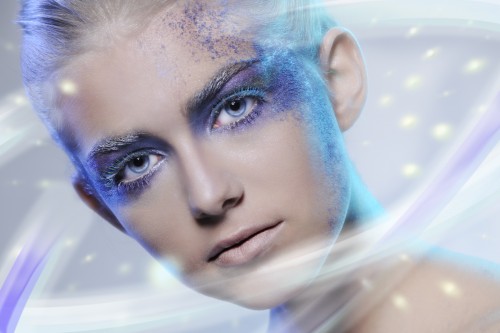We shoot differently now that we do digital. What does that mean? How is it different now that photographers use their vast digital tool box?
Film provided emulsions and chemical options for the alchemy of the darkroom. There was a secret dark midnight mire of manipulations. I was proud to have been elbow deep in toxic concoctions for 3/4 of my life. Now there is day light liberation. I was never attached to film. It smells really bad if you ever piled a whole lot of it together in one place. Chemicals and fixer — toner especially. Pixels don’t smell. Not that photos need a scratch and sniff multi-sensory dimension. A bad smell is a good indicator of things not being good for you. Just as a rule of thumb.
“Photo graph” means light painting. Daylight is a good thing, and maybe good for you, and a good place to view and print images. We talk on the phone while vibrant full color prints are slowly rolling off the printer. Great new dimensions opened there. Compose, save in layers of non-destructive adjustments, duplicate endlessly, transmit globally — instantly. Printers are so far beyond my darkroom expectations — precision, permanence, speed, cost, brilliant and free of the darkroom trays dings and stains.
So how does this affect your shooting? You now have all these controls, manipulations, plug ins, downloads and outputs. You have more access to show your work and promote your pictures. Color, control, clean up, fix things, create adjustments to your hearts content. It used to be that we learned to see specially. We hunted out pictures – search, shoot and satisfy. We used fill light, waited for light and pushed and pulled the film. Refining the disciplines of shooting and seeing was an admirable pursuit. Our destination was a “perfect negative or chrome’‘, before we changed trains and pulled into the darkroom for the second half of the trip. The perfect print. It’s changed now. Photoshop, Lightroom, NX, and other powerful manipulation tools are now our shooting destination. Capturing a file to Photoshop becomes the creative partner of shooting beyond what was even done in a darkroom. The controls of the final printed image are now in the hands of the photographer — if you choose. Not everyone wants to suffer through the learning curves of curves, and layers and modes and the 493 tools for fools like me. I must have the geek gene in there somewhere.
The day I made my first desktop print – about late 1996 – my life changed. I have never made a print in the darkroom since that day.
The pre-visual process now includes a bigger more accessible array of possibilities. Shooting, anticipating and projecting forward what you will do in post production – what you can fix, fill and balance, adjust, and merge – are now reflexes of the shooting process.
We have evolved to talking about pixels, dot pitch and DPI (Dots Per Inch) instead of grain and angstrom units. Film is part of history, a big part, but as antiquated as a wet plate.
Editing a job for a photo magazine recently I was considering images previously shot with a Nikon F100 film camera, amidst a number of digitally generated pictures. The editor said to me, “Don’t even consider anything shot on film, We’d never use it.” That’s ancient history.
